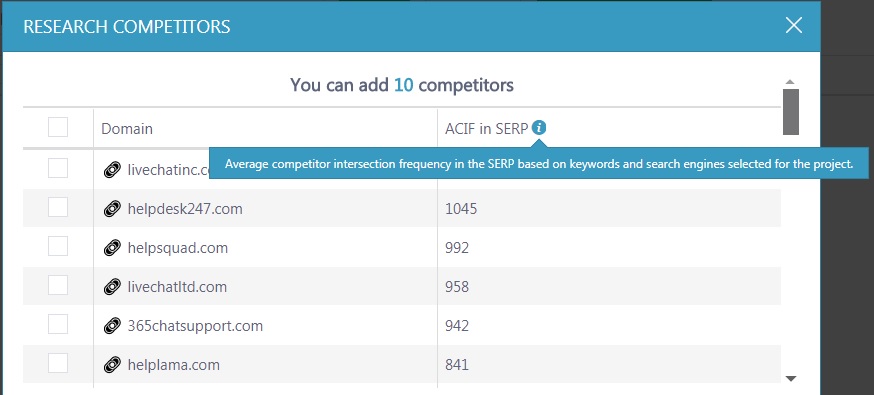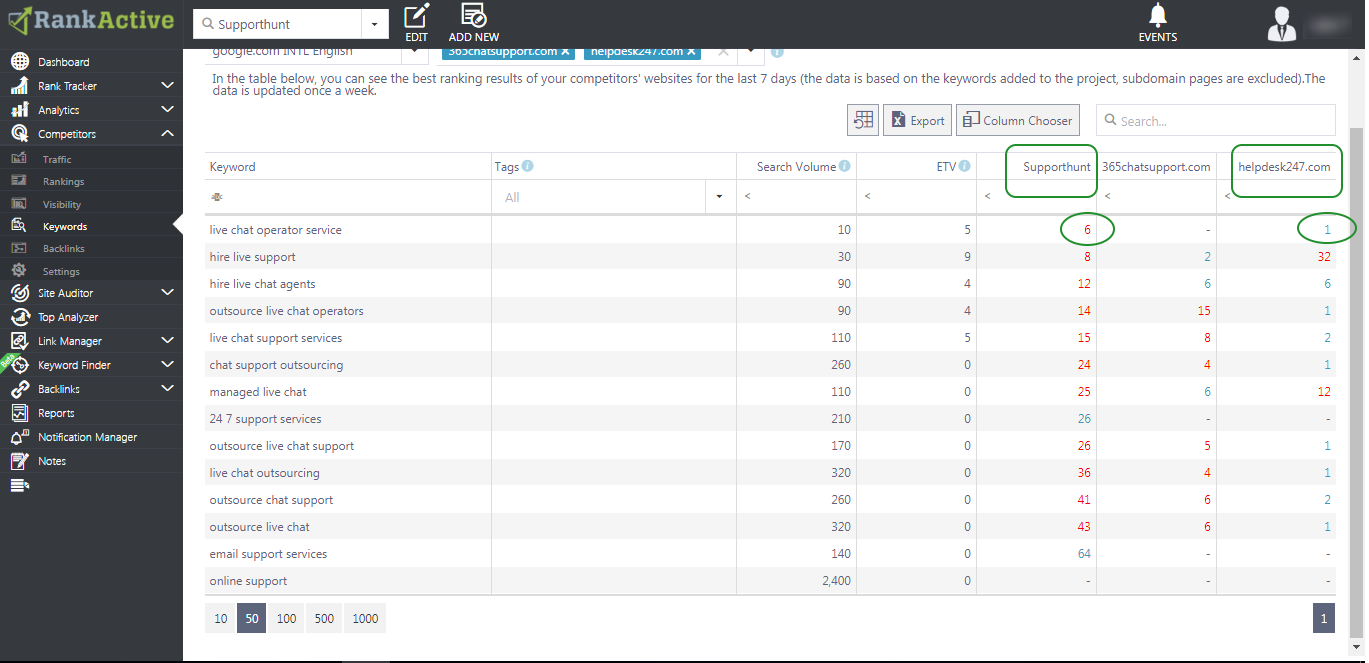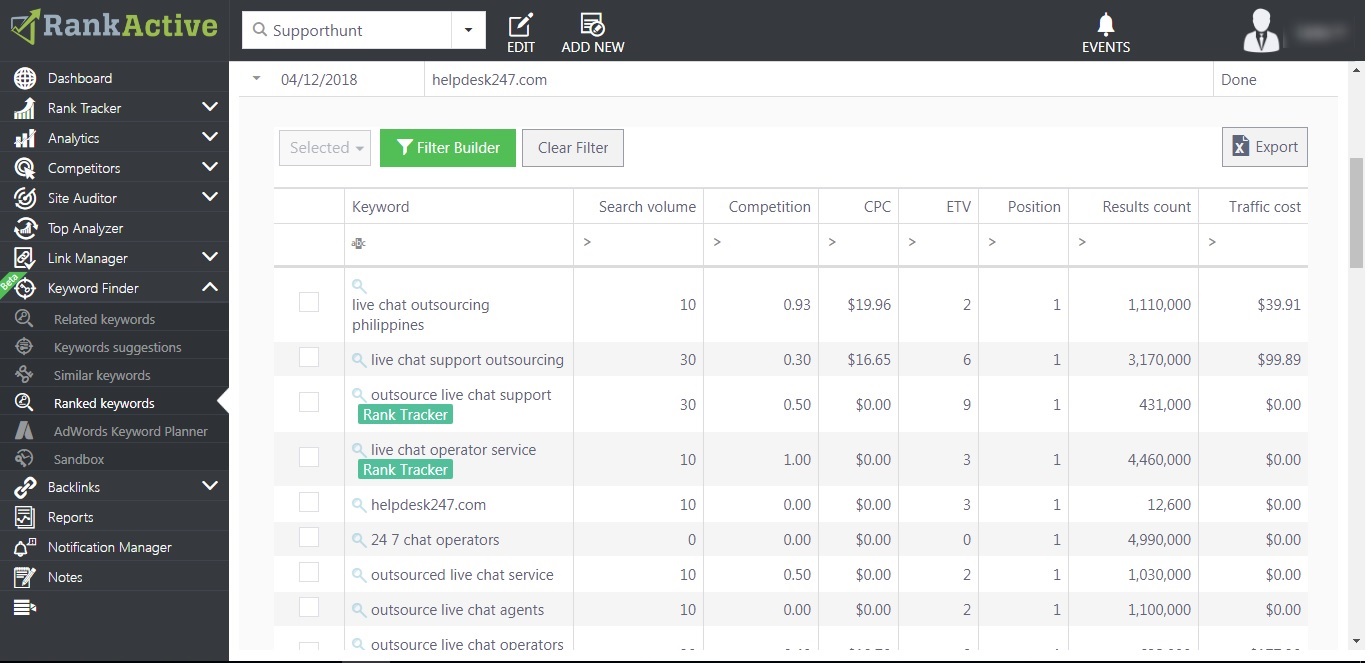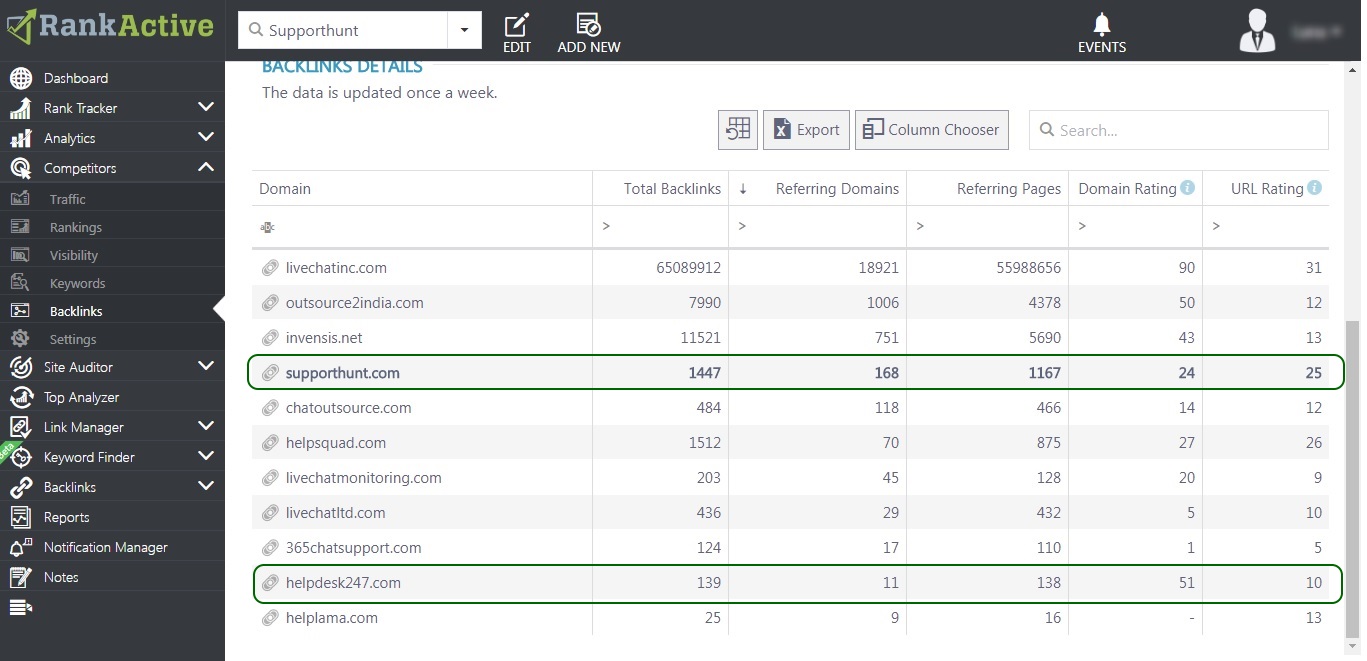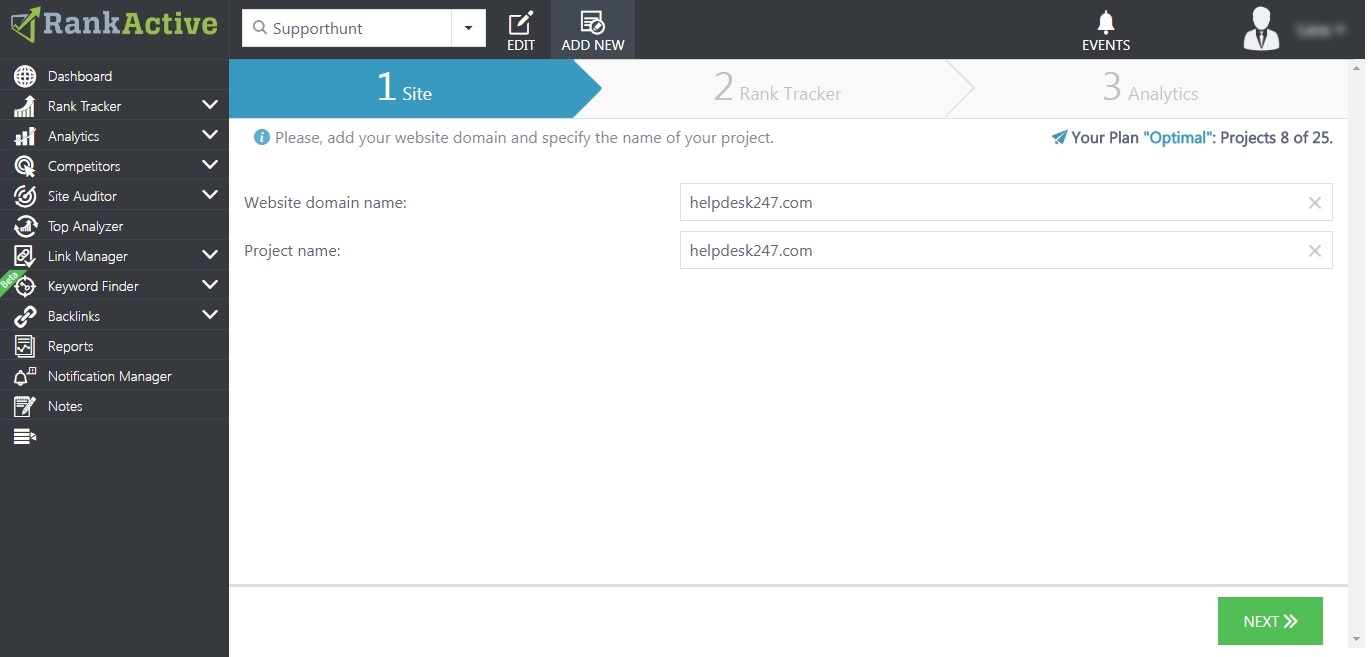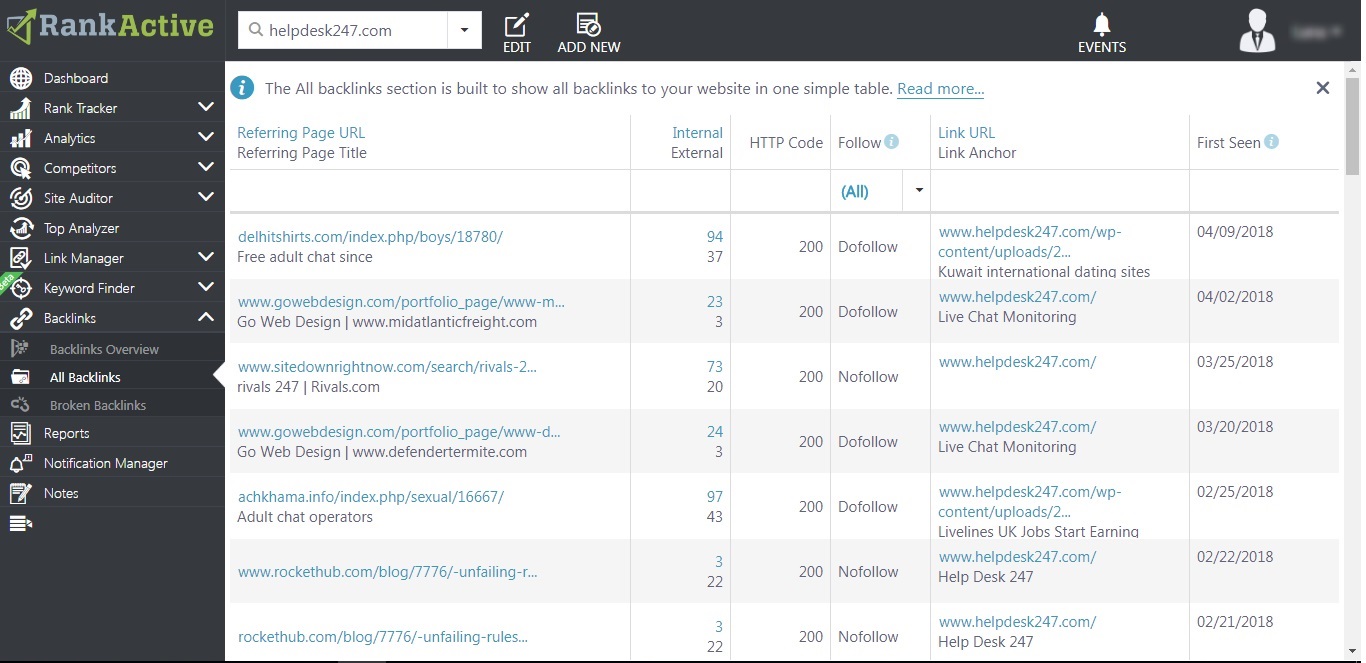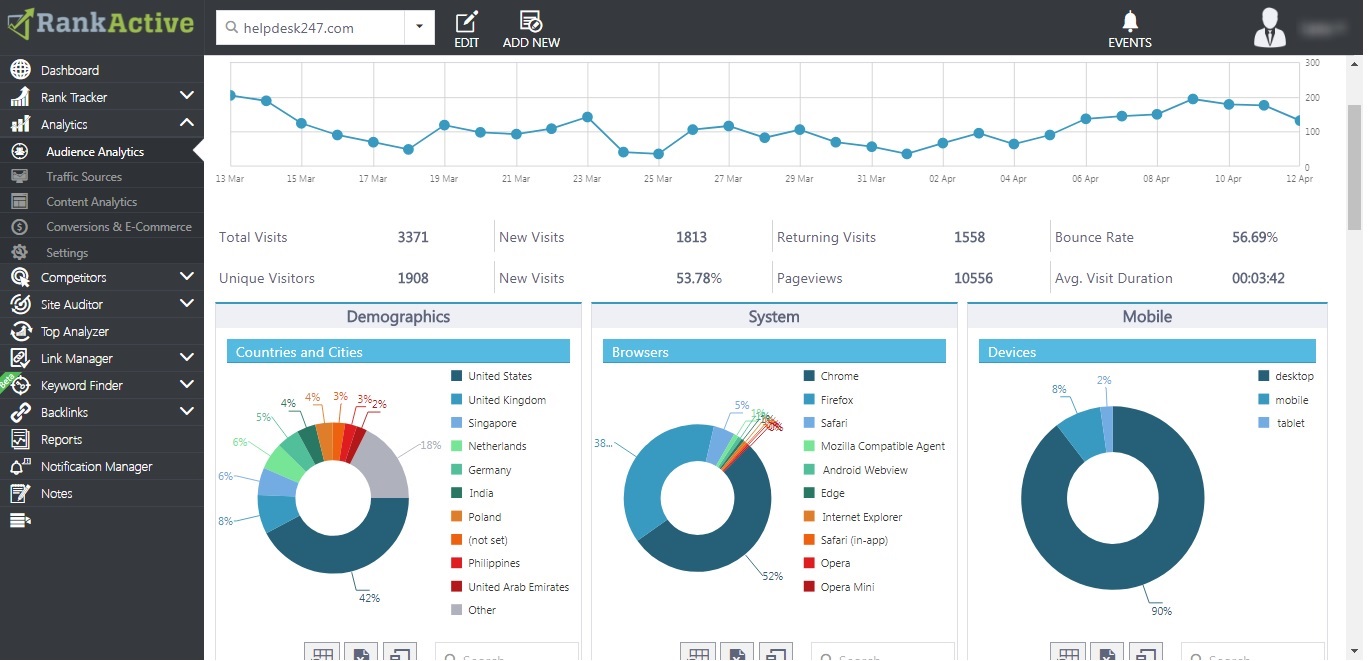Competitors analysis. Why you’ve (probably) got it all wrong!
16 April 2018 Leave a comment KEYWORD RESEARCH, LINK EARNING
Imagine a classic guy from school who intimidates everybody and knows everything about his environment. Why is he so good at his “craft”?
He analyzes the surrounding and defines the strengths and weaknesses of his potential competitors. Once a weakness is spotted, a competitor has no longer got the advantage over him. A guy can,now, easily outshine the competitor in his deeds.
This lovely character starts with basics and quickly moves to more advanced strategies if the first ones proved unsuccessful. The main idea is to see at what things your competitors slip so that you can beat them on these.
If you’re intending to trample that bully into dirt you can’t choose to act the ordinary way. You’ve seen the normal guys trying to destroy the intimidating guy using some obvious-meant-to-sink ideas which lead only to get these guys buts kicked. You don’t want that.
What do you do wrong?
There are many ways you can be analyzing your competitors. Newbies often make the same mistakes, repeating the same unsuccessful patterns which lead them to slow sinking.
The wrong way of performing competitors analysis is:
- Not using keywords research tools at all. Trying to guess the keywords that your clients are searching for is a waste of time, as well as hoping to figure what keywords your competitors are targeting.
- Using keywords research tools in a wrong way. Opening a keyword research tool and manually start typing in tonnes of keywords and adding them to your website isn’t really a good idea. You’re going to end up having the same set of keywords as your competitors do, but still you have much higher chances to miss something.
- Automatically generating keywords based on your content, forgetting that in SERPs keywords (those that people are actually asking for) may be different, and you are, probably, not targeting them.
- Choosing indirect competitors like Microsoft, Google, Amazon, Shopify and others. These are massive companies and brands which you can not really compete with, especially, if you’re just starting out your blog or business, etc. These guys have taken place in the niche with high search volume short-tail keywords at which you can’t beat them on.
- Targeting wrong competitors who aren’t really competitors (those who have only a couple of keywords related to your niche and topic). Websites that may have just a couple of intersections with your keywords aren’t your competitors, pursuing them would be pointless and, moreover, hurtful to your SEO.
- Not looking for competitors’ backlinks that you may use to your own advantage. You may miss some great opportunities with backlinks, if you’re not tracking them. Your competitors somehow succeeded to get the link, so can you.
- Not tracking your competitors’ traffic, keywords and backlinks. Not knowing where your competitors are getting traffic from, what adjustments with keywords they make and whom they are building connections with is a good way to be trampled by your competitors.
- Making raw and poor assumptions on why your competitors are outranking you. The Internet is about data and using it in a smart way. If you can get access to this data, you will be the king.
- Using wrong metrics. If you’re looking at bounce rate of your competitors, for example, on a contact page and you see that the rate is pretty high, you may think that this is where your competitors suck. High bounce rate – no leads and conversions, right? Wrong. Maybe the page is organized well-enough for people to just copy the phone number, skype or email and then they leave just to type in the info and contact the website holders for their services.
How to do it right?
We assume that you’ve already learned the basics of SEO and you have generated the list of keywords based on your website’s content. Also, you know what positions you’re ranked for by these keywords. In case if you don’t even know what keywords are and how to select them, then read about how to choose keywords for SEO.
So, how do you do the right competitors analysis?
First of all, you should know your competitors. Speaking about international search (non-local) you can be searching for them manually in a couple of ways:
- In Google search line type in related:yourdomainname.com. For example: related:rankactive.com. Google will show you all the website related to yours, based on their content.
- You can, as well, use our platform which will show you the potential competitors, whom you can track afterwards. In competitors “Settings” section you simply click “Research competitors” which will show you this message.
The research is based on the number of keywords and all the intersections (where your keywords cross). You can select 10 of your potential competitors. You can now analyze them manually, by clicking on their website and watching why they can be ranked before you or why are they getting closer to you in SERPs.
This is where we select our competitors and, by closely analyzing them, we choose only direct competitors. We are not touching big guys so far, since we are not ready to compete on the big market yet. Once we knock out a couple of competitors, we can aim for bigger fish.
Use your keywords research tools in a smart way.
In our keywords research tool in “Competitors” section you can select the number of competitors from 1 to 10. You can see the exact keywords that you have and the same keywords that your competitors have. You can, also, see your positions in SERPs as well as the positions of your competitors.
In this example, you can see that for supporthunt.com there are some positions that this website is losing comparing to its competitors.
Once, you’ve figured out the keywords, you need to start getting your positions back and do your best to outperform your competitors. As you can see in the picture, they are both targeting long-tail keywords. In this case, what supporthunt needs to do is that they have to learn what other keywords their competitors are targeting for, what backlinks they have, etc.
In the “Keyword finder” section open “Ranked Keywords” and enter the domain name of a competitor. You’ll see all the keywords that your competitor has, and now you can add them to “Rank Tracker” to start tracking these keywords.
This information allows you to keep your hand on the pulse and constantly monitor the updates of your competitors, more exactly, the keywords that they are adding. Also, if your competitors have some keywords which you’re not targeting yet, then you need to start doing it. Your competitors are at the top for a reason and the first strategy will be to copy out their techniques.
Long-tail keywords are a good way to meet client’s queries. As the new Google update of mobile-first indexing was released, it’s a good idea to start building a mobile version of your website. A priority of indexation will be given to the mobile page rather than the desktop’s one.
Another reason to optimize your website for mobile devices is that people are mostly switching to using smartphones and as the result, they are no longer using “ordinary” way of searching. Users widely use voice search nowadays, so you might consider that as a chance of taking the advantage over your competitors if they haven’t got mobile version of a website yet.
Track the backlinks of your competitors
The reason your competitors are at the top is that they’re, probably, having a strong link profile. They have built relationships with some authoritative-looking guys and they inspire power. You might also think that these guys are absolutely impossible to reach out to. This is wrong.
If your competitors somehow managed to connect with some serious and big websites, so can you. Maybe not right now, but you can start reaching out to them today. Try to be as an active user as possible on their website, comment, share and just show yourself – do everything to catch their attention and curiosity.
However, let’s be more specific. How to find who is linking to your competitors?
So, you go to “Competitors” -> “Backlinks”
You can see here is that helpdesk247.com has fewer links than supporthunt.com, however, from the previous screenshots we know that they are ranked higher, even first, for some particular keywords.
How’s that? We’ve got more links, it shouldn’t be happening, right? Wrong. They might be having better links. The most authoritative links are from domains .edu, .gov, etc. Also, maybe some big guys are linking to them.
So, how do we find it out?
Click big button at the top of the screen “Add New” and then fill in the info about your competitor.
When you finished, go to “Backlinks” section and choose “All backlinks”. This is how you’re going to see the exact amount of backlinks of your competitor, as well as resources. Not only you can see backlinks, but also keywords and the amount of traffic that goes to this website.
Now, there are two ways you can have an advantage over your competitors:
- Try to build relationships with those resources that are linking to your competitor. It may be a short or long-term perspective project. It all depends on your luck and communicative skills.
- Look for broken links of your competitors and if you find them to reach out to the webmasters of the linking website and ask to write your name there, instead of your competitor’s. You can say that 404 pages are bad for SEO (which really is) and easily persuade them to start linking to your website, because your pages are working stably.
The “right way” of competitors analysis here is that we’re not trying to guess with whom our competitors have built connections, but relying on raw data instead of raw assumptions.
Again, it’s all about data and statistics, once you’re in, you’re the king. That’s it.
Track your competitors
Stealing keywords and backlinks from your competitors isn’t a one-time task. It is an ongoing project which you’re constantly performing. Why? Your competitors may come up with new ideas, they are also testing new techniques and approaches. They are building new connections and implementing new things into their websites.
By watching them persistently and attentively, you can fish out some really good ideas, which you can modify and adjust to your own project.
Section “Analytics” -> “Audience” shows you who enters the website, from which platforms and other comprehensive data.
Combining this data with the keywords that your competitors are using, you can find out some useful marketing strategies that you may want to apply to your content and website.
Bonus tips
Keywords and backlinks are the core for building an authoritative website. Use all the keywords your competitors are using and add more. How? Find out about your customer persona, try to figure out what places they intend to visit on the web. If your customers are SEO business developers, for example, they are probably interested in technology, local news, they like to self-educate and they ask a lot of questions, so they probably hang out on Quora, news websites, etc.
How can you use it? Your content plays the major role in establishing relationships with people, so try to reach out to them by meeting your clients’ interests and desires. This is something that your competitors might not be even thinking about.
Competitors analysis is all about finding weaknesses of them, searching for some places where they slip and become vulnerable, so that you can beat them on these things.
Look at this screenshot of meta description and title. What’s that? You can see misspellings and a poorly-written title which means that competitors might already be optimizing for it while supporthunt is sleeping.
Another tip is about content. Analyze the frequency of postings articles on the competitor’s blog. If they are posting 5 articles a week, then, probably, you need to be doing the same thing. If they’re using videos, images and other customer acquisition channels, then you should start implementing those as well.
You might look at such channels as Facebook, Youtube, Twitter and other social media. You can find that, maybe, your competitors are using everything, but for Twitter. If your competitor is a really big company, then they might be doing this for a reason and you shouldn’t waste your time and money on maintaining this project. However, they might have just forgotten or lacking time to do that, so it may become a way to play with your competitors and destroy them with this small feature.
Conclusions
Everybody has strengths and weaknesses. Your competitors are probably missing out something, just watch carefully and you’ll skyrocket to the top by simply implementing those features that your competitors have forgotten.
- Build a strong list of direct competitors and start looking for keywords intersections. Find where they cross and build a keywords list of your competitors. See what the competitors have missed and add it to your project.
- Analyze the backlinks of your competitors, where they come from and what these resources are. Having a couple of highly authoritative links is better than hundreds of poor-quality ones. Steal broken links of your competitors and build relationships with your competitor’s link providers.
- Track the traffic of your competitors. Know where it comes from and what your competitors are using to target the audience.
- Copy your competitors in everything that you lack to become equal, then add a spark to outshine them
- Watch for small things like, if your competitors have HTTPS, look at their titles and meta descriptions. Check out the frequency of posting blogs and what they are posting if your content is alike.
- Look at their products page and what they are selling. How they are selling it and if you’re doing it better.
There is one last question. What time is it? Oh, wait, it seems like it’s time to destroy your competitors now!
Tags: analyze my competitors, competitors, competitors analysis
Like this article? There’s more where that came from.
- 4 Steps Guide to Using Google Analytics for Social Media
- Setting up of the trigger to be notified when your ETV reaches the goal
- How to Get Out of Google Sandbox and Do It Quickly?
- Geolocation Redirect 101: How to Secure Your SEO Localization Efforts?
- Your Ultimate Guide to SEO Reporting with RankActive
- Your 7-Step Guide to Increasing Page Speed



